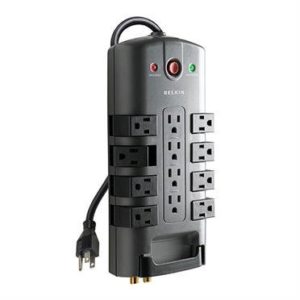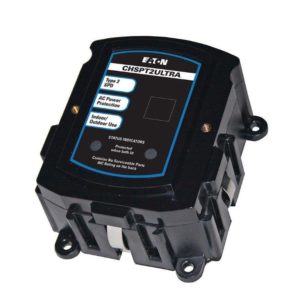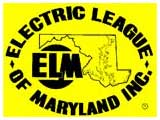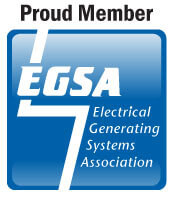Electricity causes more than 40,000 fires every year in the United States, resulting in hundreds of injuries and deaths. Electrical fires kill more than 750 people and cause more than $1 billion in property damage annually, according to the U.S. Consumer Product Safety Commission (CPSC).
The top electrical safety hazards include electrical fires caused by aging wiring, misuse of surge suppressors, and shocks and electrocutions from  wiring systems and large pieces of equipment.
wiring systems and large pieces of equipment.
Extension cord fires outnumber fires beginning with attached or unattached power cords by more than 2-to-1. Employers and employees need to remember that an important aspect of workplace electrical safety is properly using extension cords, power strips, and surge protectors.
Other sources of electrical accidents are faulty or defective equipment, unsafe installation, or misused equipment. Follow these guidelines to help keep your workplace safe:
General Electrical Safety Tips
- Replace or repair loose or frayed cords on all electrical devices.
- Avoid running extension cords across doorways or under carpets.
- In areas with small children, such as child care centers, electrical outlets should have plastic safety covers and be tamper resistant.
- Follow the manufacturer’s instructions for plugging an appliance into a receptacle outlet.
- Avoid overloading outlets. Consider plugging only one high-wattage
 appliance into each receptacle outlet at a time. If the circuit breaker for that receptacle is doing its job, it will trip if the circuit becomes overloaded.
appliance into each receptacle outlet at a time. If the circuit breaker for that receptacle is doing its job, it will trip if the circuit becomes overloaded. - If outlets or switches feel warm, shut off the circuit and have them checked by a licensed electrician.
- Avoid using “cube taps”, power strips, and other devices that allow you to plug multiple appliances into a single receptacle.
Outlet Safety
Receptacles (properly known as “receptacle outlets”) are perhaps the most commonly used and least thought of devices in the workplace. And now everyone has cell phone and other mobile device chargers to plug into a limited number of outlets.
Here are some tips to keep your workplace’s outlets safe:
- Check outlets regularly for broken parts, overheating, loose connections, and corrosion. Consider having an electrical inspection performed by a qualified, licensed electrician to determine the integrity of your outlets and your entire electrical system.
- Check for outlets that won’t hold a plug. Tired receptacles can lead to arcing faults and fires.
- Hot is not OK. If a receptacle or switch wall plate is discolored or hot to the touch, immediately shut off power to the circuit and have it checked by a licensed electrician.
- Replace missing, damaged, or broken wall plates.
Power Strips and Surge Suppressors
Power strips allow employees to plug more products into the same outlet, which can be handy, but can also be a safety hazard. Power strips, aka outlet strips, don’t provide more power to a location, just more access to the same limited capacity of the circuit to which it is connected.
- Surge suppressors do help to protect connected equipment, but are not
 an absolute guarantee. Many come with dollar-figure guarantees for connected equipment damaged in a surge. Please do yourself a favor and read the fine print!
an absolute guarantee. Many come with dollar-figure guarantees for connected equipment damaged in a surge. Please do yourself a favor and read the fine print! - Any circuit likely also still serves a variety of other outlets and fixtures, in addition to the items plugged into the power strip. When using power strips and surge suppressors, keep these safety principles in mind:
- Don’t overload the circuit. Know the capacity of the circuit and the power requirements of all the electrical items plugged into the power strip and into all the other outlets on the circuit, as well as any light fixtures on the circuit. We have seen power strips literally explode when faulty equipment was plugged into them.
- A heavy reliance on power strips means that you probably don’t have
 enough receptacles. Have a qualified electrician install additional outlets where needed.
enough receptacles. Have a qualified electrician install additional outlets where needed.
- Surge suppressors can manage the small surges and spikes sometimes generated by turning equipment on and off. They may even protect against a large surge generated from outside sources like lightning or problems along the power lines to the business. In the event of a large surge or spike, the surge suppressor only protects your equipment one time, and then it will likely need replacing. These devices basically sacrifice themselves to protect connected equipment. Check them regularly for the “happy light,” usually green, which shows that protection is enabled.
- Consider purchasing surge suppressors with cable and phone jacks to provide the same protection to your phone, fax, computer, TV, and so on.
- Not all power strips are surge suppressors, and not all surge suppressors can handle the same load and events. There are also surge protective devices that mount to or inside a breaker panel. Ask a licensed electrician for advice to be sure the equipment you buy matches your needs.
Have questions? Give us a call at 301-606-5181 or send us an e-mail at [email protected].







